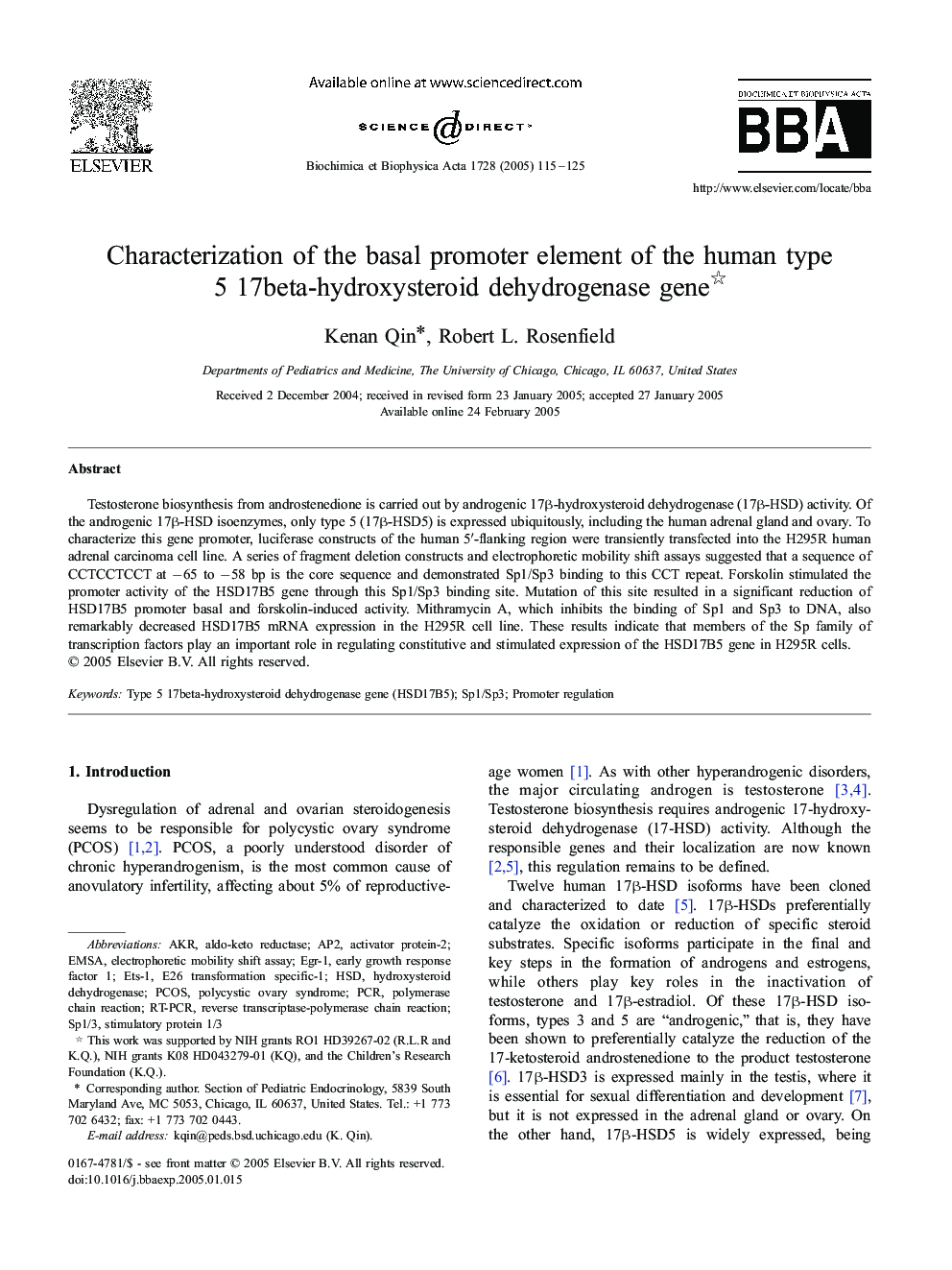| Article ID | Journal | Published Year | Pages | File Type |
|---|---|---|---|---|
| 9885558 | Biochimica et Biophysica Acta (BBA) - Gene Structure and Expression | 2005 | 11 Pages |
Abstract
Testosterone biosynthesis from androstenedione is carried out by androgenic 17β-hydroxysteroid dehydrogenase (17β-HSD) activity. Of the androgenic 17β-HSD isoenzymes, only type 5 (17β-HSD5) is expressed ubiquitously, including the human adrenal gland and ovary. To characterize this gene promoter, luciferase constructs of the human 5â²-flanking region were transiently transfected into the H295R human adrenal carcinoma cell line. A series of fragment deletion constructs and electrophoretic mobility shift assays suggested that a sequence of CCTCCTCCT at â65 to â58 bp is the core sequence and demonstrated Sp1/Sp3 binding to this CCT repeat. Forskolin stimulated the promoter activity of the HSD17B5 gene through this Sp1/Sp3 binding site. Mutation of this site resulted in a significant reduction of HSD17B5 promoter basal and forskolin-induced activity. Mithramycin A, which inhibits the binding of Sp1 and Sp3 to DNA, also remarkably decreased HSD17B5 mRNA expression in the H295R cell line. These results indicate that members of the Sp family of transcription factors play an important role in regulating constitutive and stimulated expression of the HSD17B5 gene in H295R cells.
Keywords
Related Topics
Life Sciences
Biochemistry, Genetics and Molecular Biology
Biochemistry
Authors
Kenan Qin, Robert L. Rosenfield,
